Related Research Articles
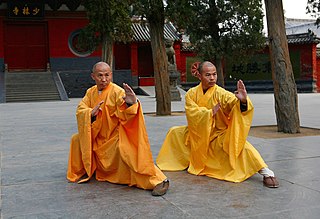
Nei jia is the collective name for the internal Chinese martial arts. It relates to those martial arts occupied with spiritual, mental or qi-related aspects, as opposed to an "external" approach focused on physiological aspects. The distinction dates to the 17th century, but its modern application is due to publications by Sun Lutang, dating to the period of 1915 to 1928. Nei jing is developed by using nei gong or "internal changes", contrasted with wài gōng or "external exercises".
Autogenic training is a relaxation technique first published by the German psychiatrist Johannes Heinrich Schultz in 1932. The technique involves repetitions of a set of visualisations accompanied by vocal suggestions that induce a state of relaxation and is based on passive concentration of bodily perceptions like heaviness and warmth of limbs, which are facilitated by self-suggestions. Autogenic training is used to alleviate many stress-induced psychosomatic disorders.

Pushing hands, Push hands or tuishou is a two-person training routine practiced in internal Chinese martial arts such as baguazhang, xingyiquan, tai chi, and yiquan. It is also played as an international sport akin to Judo, Sumo and wrestling, such as in Taiwan, where the biannual Tai Chi World Cup is held.
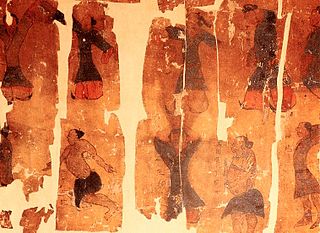
Daoyin is a series of cognitive body and mind unity exercises practiced as a form of Daoist neigong, meditation and mindfulness to cultivate jing (essence) and direct and refine qi, the internal energy of the body according to Traditional Chinese medicine. These exercises are often divided into yin positions, lying and sitting, and yang positions, standing and moving. The practice of daoyin was a precursor of qigong, and was practised in Chinese Taoist monasteries for health and spiritual cultivation. Daoyin is also said to be a primary formative ingredient in the well-known "soft styles" of the Chinese martial arts, of Taiji quan, and middle road styles like Wuxingheqidao.
In alternative medicine, bodywork is any therapeutic or personal development technique that involves working with the human body in a form involving manipulative therapy, breath work, or energy medicine. Bodywork techniques also aim to assess or improve posture, promote awareness of the "bodymind connection" which is an approach that sees the human body and mind as a single integrated unit, or to manipulate the electromagnetic field alleged to surround the human body and affect health.
Mind–body interventions (MBI) or mind-body training (MBT) are health and fitness interventions that are intended to work on a physical and mental level such as yoga, tai chi, and Pilates.
A relaxation technique is any method, process, procedure, or activity that helps a person to relax; attain a state of increased calmness; or otherwise reduce levels of pain, anxiety, stress or anger. Relaxation techniques are often employed as one element of a wider stress management program and can decrease muscle tension, lower blood pressure, and slow heart and breath rates, among other health benefits.
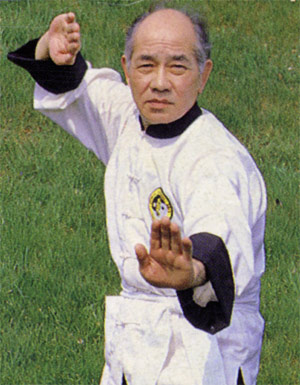
The Lee style of tai chi (李氏太極拳) is closely related to a range of disciplines of Taoist Arts taught within the Lee style including Qigong, Daoyin, Ch'ang Ming, Traditional Chinese Medicine, Taoist alchemy, Feng Shou kung fu, and weapons practice. According to practitioners, it was first brought to the West in the 1930s by Chan Kam Lee and was subsequently popularized by Chee Soo who was the President of the International Taoist Society from 1958 until his death in 1994. The Lee style of tai chi comprises two forms known as 'the dance' and 'the form'. Other exercises include Yifu Shou or 'sticky hands', Whirling Hands, Whirling Arms, and various qi and Li development exercises. Lee style t'ai chi is related to Martial Arts training, and there are five distinct areas of development that comprise the whole Art:
- Physical
- Mental
- Breathing
- Sheng Qi
- Ching Sheng Li.
Neigong, also spelled nei kung, neigung, or nae gong, refers to a series of internal changes that a practitioner goes through when following the path to Dao, and these changes may be achieved through practices including qigong or tai chi. Neigong is also associated with xingyi quan.
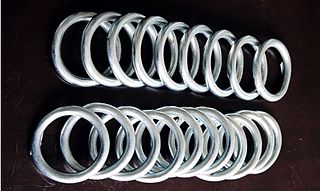
Ziranmen, also known as Natural Boxing, is a Northern internal style of kung fu that is taught in conjunction with qigong breathing techniques. The style traces its lineage to Dwarf Xu, who based it on ancient Taoist philosophy. Du Xinwu, the next bearer of the lineage, served as a bodyguard to Sun Yat-sen, then the provisional president of the Republic of China. Du imparted his knowledge of "Natural Boxing" to his eldest son Du Xiusi and Wan Laisheng, a prominent twentieth century martial artist.
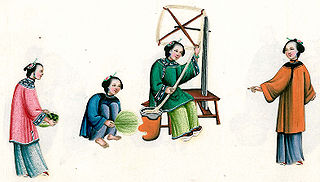
Silk reeling refers to a set of neigong movement principles expressed in traditional styles of tai chi (太極拳), but especially emphasized by the Chen and Wu styles.
In the management of Parkinson's disease, due to the chronic nature of Parkinson's disease (PD), a broad-based program is needed that includes patient and family education, support-group services, general wellness maintenance, exercise, and nutrition. At present, no cure for the disease is known, but medications or surgery can provide relief from the symptoms.
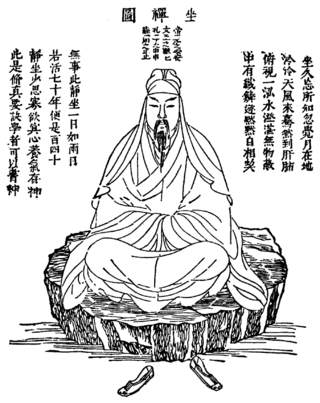
The microcosmic orbit (小周天), also known as the Self Winding Wheel of the Law, is a Taoist qigong energy cultivation technique. It involves deep breathing exercises in conjunction with meditation and concentration techniques which develop the flow of qi along certain pathways of energy in the human body which may be familiar to those who are studying traditional Chinese medicine, qigong, tai chi, Neidan and Chinese alchemy. The exercise can be performed usually at first in a sitting position, but it can also be practiced standing as in Zhan zhuang or with movements included as with tai chi.
Aquatic therapy refers to treatments and exercises performed in water for relaxation, fitness, physical rehabilitation, and other therapeutic benefit. Typically a qualified aquatic therapist gives constant attendance to a person receiving treatment in a heated therapy pool. Aquatic therapy techniques include Ai Chi, Aqua Running, Bad Ragaz Ring Method, Burdenko Method, Halliwick, Watsu, and other aquatic bodywork forms. Therapeutic applications include neurological disorders, spine pain, musculoskeletal pain, postoperative orthopedic rehabilitation, pediatric disabilities, and pressure ulcers.
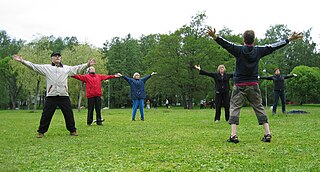
Asahi is a Finnish health exercise based on the eastern traditions of tai chi, qigong, yiquan and yoga, with a western scientific viewpoint. Asahi is designed to suit everybody, regardless of physical condition or age and education level.
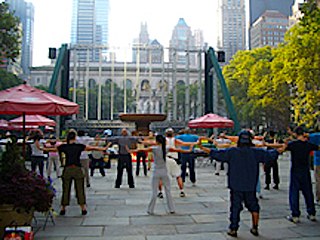
Qigong ,, chi kung, chi 'ung, or chi gung is a system of coordinated body-posture and movement, breathing, and meditation used for the purposes of health, spirituality, and martial arts training. With roots in Chinese medicine, philosophy, and martial arts, qigong is traditionally viewed by the Chinese and throughout Asia as a practice to cultivate and balance qi, translated as "life energy".
The Halliwick Concept focuses on biophysical principles of motor control in water, in particular developing sense of balance (equilibrioception) and core stability. The Halliwick Ten-Point-Programme implements the concept in a progressive programme of mental adjustment, disengagement, and development of motor control, with an emphasis on rotational control, and applies the programme to teach physically disabled people balance control, swimming, and independence. Halliwick Aquatic Therapy, implements the concept in patient-specific aquatic therapy for application in rehabilitation of injury and disability.
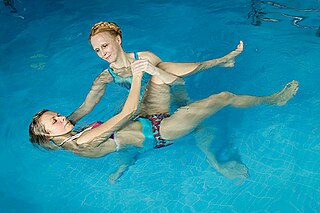
Watsu is a form of aquatic bodywork used for deep relaxation and passive aquatic therapy. Watsu is characterized by one-on-one sessions in which a practitioner or therapist gently cradles, moves, stretches, and massages a receiver in chest-deep warm water.
The Bad Ragaz Ring Method (BRRM) is a type of aquatic therapy used for physical rehabilitation based on proprioceptive neuromuscular facilitation (PNF). BRRM is a water-based technique in which therapist-assisted strengthening and mobilizing exercises are performed while the patient lies horizontally in the water, with support provided by rings or floats around the neck, arms, pelvis, and legs.

Hydrogymnastics is a water-based therapeutic exercise. As its name suggests, this form of aquatic therapy or aquatic rehabilitation is performed in water, and it can take place in swimming pools at aquatic leisure centres and/or in home pools. Being a form of aquatic therapy, hydrogymnastics aims to improve the physical and psychological health and well-being of an individual. Hydrogymnastics can be performed by anyone, including youths, middle-aged people, the elderly, athletes and those with disabilities. Hydrogymnastics is often assisted by a qualified aquatic therapist and/or exercise physiologist. Although the effects of hydrogymnastics may vary between individuals belonging to different age groups and genders, hydrogymnastics mainly improves one's cardiovascular fitness, strength, balance and mobility.
References
- 1 2 Dutton, M. 2011. Orthopaedics for the physical therapist assistant. Jones & Bartlett Learning. p 187, Ai Chi. ISBN 978-0763797553.
- 1 2 3 4 Bommer A and Lambeck JF. 2011. Ai Chi: applications in clinical practice. pp 171-191, Chapter 7 In: Becker, BE and Cole, AJ (eds). Comprehensive aquatic therapy, 3rd edition. Washington State University Press. ISBN 978-0615365671.
- 1 2 Sova R. 2009. Ai Chi. pp 101-116. In: Brody, LT and Geigle, PR (eds). Aquatic exercise for rehabilitation and training. Human Kinetics. ISBN 978-0736071307.
- ↑ Use of the term Clinical Ai Chi has been granted by Jun Konno to the International Aquatic Therapy Foundation (IATF), Switzerland.